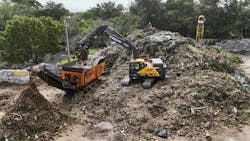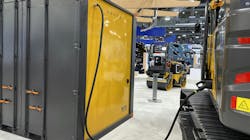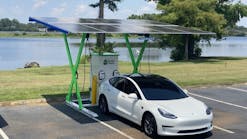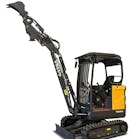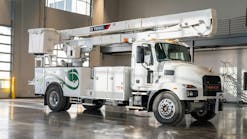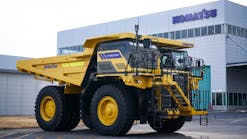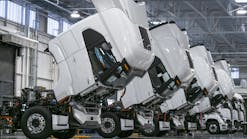Gallant Outlines Volvo’s Journey Toward Sustainable Construction
The term “sustainability” is associated with higher initial cost and as a buzzword to appease investors. As it applies to reducing carbon footprint while maintaining productivity, however, it is a top consideration for OEMs, fleets, and rental equipment providers. Volvo Construction Equipment is one manufacturer taking concrete steps toward finding efficient and green alternative power solutions for heavy equipment.
Volvo CE’s parent, Volvo Group, also manufactures buses and trucks, which have been using electric solutions for years. This has positioned the company to address the heavy equipment side, leading to an aggressive set of targets for the development of electric and hybrid machinery. In 2019, the company launched its first six battery-electric machines, utilizing 48V batteries adapted from the forklift industry.
According to Dr. Ray Gallant, VP sustainability and productivity services at Volvo CE, the company has identified three key technology areas that will drive sustainable power solutions: sustainable energy sources, telematics, and automation.
“We are exploring various energy sources, including hydrogen and renewable diesel, while also focusing on optimizing energy usage on job sites through telematics,” Gallant says. “With telematics, we can analyze data from all machines on a site, helping operators reduce waste and improve efficiency.”
Recent advancements have proven promising, particularly with the introduction of the EC230 Electric excavator, featuring a 600V battery system. The EC230 Electric has an operating weight of 50,000 to 57,000 pounds and a maximum digging depth of 22 feet 1 inch. Bucket capacity is 1.44 cubic yards, and breakout force is 33,500 lb.-ft. It has a 450-kWh battery and can run seven to eight hours, depending on application.
“This machine opens new avenues for electrification for us,” Gallant says, highlighting the shift to larger battery systems and the accompanying need for specialized charging solutions. “Charging larger machines requires more infrastructure, and we are working on ensuring that our customers have the necessary support to manage these changes.”
One of the most pressing challenges for the widespread adoption of electric machinery is the need for adequate charging infrastructure. “While we have sufficient electric generation capacity, the real challenge lies in delivering that power where it’s needed,” Gallant says.
“Our machines are designed to connect to existing grid systems, but in remote job sites, we need to explore portable power solutions or even on-site generation,” he says. “How do we make that power portable or generate it close to the machines so we can refill? That's going to be the biggest challenge to electrification in the off-road sector.”
Automation is another piece Volvo is exploring as part of its vision for sustainable equipment. The focus is not on achieving fully autonomous machines, rather it encompasses operational enhancements, such as power steering and dig assist technologies, which help operators work more efficiently and reduce fuel consumption, according to Gallant.
Looking forward, Gallant emphasizes the importance of a holistic approach to sustainability, urging stakeholders to think beyond simply acquiring electric machines.
“We realize that this is the journey, not an end point,” he says. “You don't get to be sustainable; you work toward sustainability, and we are at the very, very beginning of this journey.”

